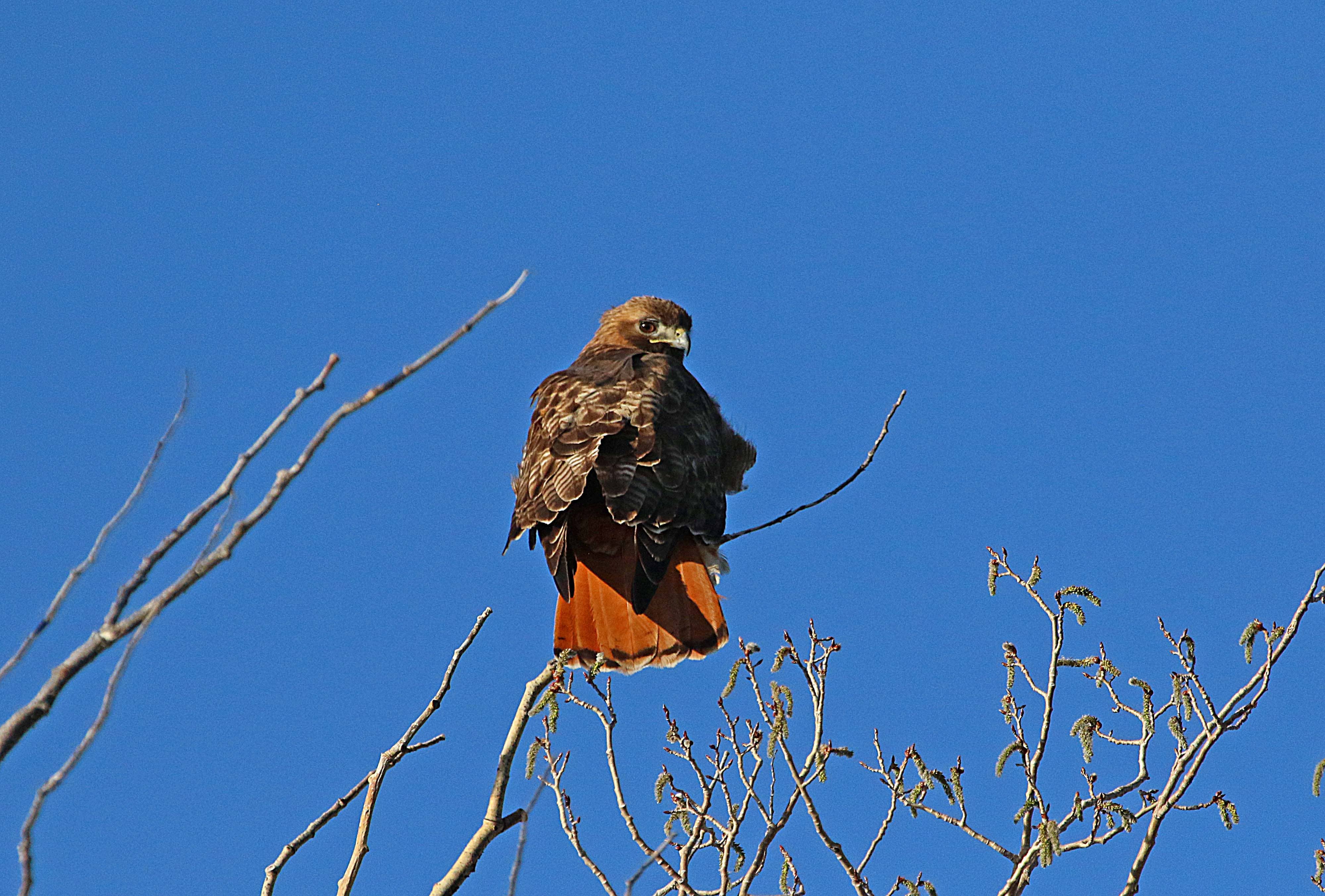
Spring is here, which means wildlife migrations are in full swing. Bird-watching is a great opportunity to get outdoors and see a wide variety of wildlife — and enjoy the fun challenge of trying to identify them!
World Migratory Bird Day <https://www.worldmigratorybirdday.org/> was held on Saturday but is celebrated throughout the month of May. The annual event celebrates the migration of nearly 350 species of migratory birds between nesting habitats in North America and non-breeding grounds in Latin America, Mexico and the Caribbean.
Early mornings (from 6-9 a.m.) are great times to locate birds since they tend to be very vocal and active during those hours. It’s also helpful to use binoculars and to have a bird identification book — or an online resource — within reach during your birding trip. Both can be very useful in identifying the different bird species you may see. Whether you are a bird-watching enthusiast or just like being outside in nature, here are several great spots throughout Utah to see migrating birds this spring:
Great Salt Lake Bird Festival
The 23rd annual Great Salt Lake Bird Festival <http://www.daviscountyutah.gov/greatsaltlakebirdfest> is an exciting opportunity to see and learn more about birds in Utah. Sponsored by Davis County and hosted at the Utah Division of Wildlife Resources’ George S. and Dolores Doré Eccles Wildlife Education Center <https://wildlife.utah.gov/discover/eccles-education-center.html>, this event will take place May 13-16 at a variety of locations around the Wasatch Front. The event was canceled in 2020 due to COVID-19, and there will be some new safety protocols and requirements in place this year <https://www.daviscountyutah.gov/greatsaltlakebirdfest/covid-19>. The festival will offer over 25 field trips, each designed to create a uniquely different experience, as well as other activities, including nature walks, arts and crafts, and bird releases. Be aware that the field trips are space limited and you need to reserve your spot in advance.
The Eccles Wildlife Education Center will be the headquarters for the festival, and it offers a 1.6-mile nature trail that visitors can stroll along to spot birds and enjoy the wetlands. However, if you don’t feel up to walking or the weather isn’t good, there are opportunities to see birds from inside the conservation hall at the center. The conservation hall overlooks a pond, which has a variety of birds, and there are also several nesting poles within view, especially if you use binoculars or one of the hall’s available spotting scopes. This is a great time of year to see blue herons nesting on the poles, and visitors can also often see avocets, geese and sandhill cranes during the spring.
For more information about the event and to purchase tickets, visit the Great Salt Lake Bird Festival website. <https://www.daviscountyutah.gov/greatsaltlakebirdfest/the-festival>
Northern Utah
– Willard Bay State Park Campground: This is a great place to see migrating wood warblers.
– Bear River Migratory Bird Refuge: Visitors can enjoy a self-guided 12-mile automobile tour at this national wildlife refuge and see a variety of birds that use the refuge as a migratory stopover. The tour route is open every day from sunrise to sunset. Find more details on the U.S. Fish and Wildlife Service website. <https://www.fws.gov/nwrs/threecolumn.aspx?id=2147485230>
– Mountain reservoirs: East Canyon, Croydon, Echo and Pineview reservoirs are all great places to view common loons on their migration north to their breeding territories.
Central Utah
– Utah Lake State Park: The park and the airport dike road are great viewing areas for seeing migrating birds.
– River corridors and other wetland areas: The Provo River Trail, Spanish Fork River, Hobble Creek Trail and Jordan River Trails are also great bird-watching locations.
Northeastern Utah
– Ouray National Wildlife Refuge: This location also offers a self-guided 9-mile automobile tour that provides a great opportunity to view several different habitats and birds, especially from the observation tower. Find more details on the USFWS website. <https://www.fws.gov/refuge/ouray/visit/visitor_activities.html>
– Pelican Lake: This waterbody has a large diversity of waterfowl and migratory songbirds.
– Stewart Lake Waterfowl Management Area
– Mountain reservoirs: Big Sandwash, Matt Warner, Red Fleet and Steinaker reservoirs are great viewing locations for seeing migrating common loons. You can also often see pelicans at Matt Warner Reservoir this time of year. All of these reservoirs are ideal places to see small songbirds as well due to the variety of habitats they offer.
Southeastern Utah
– Mill Creek: This area near Moab is a great spot for viewing migrating birds.
